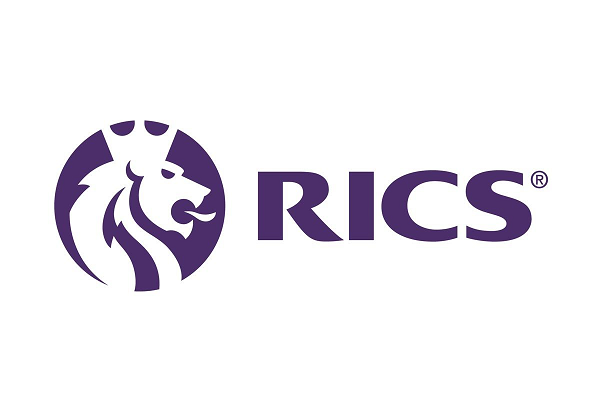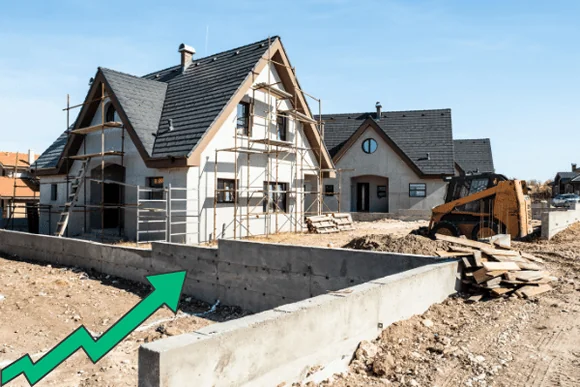News
Rental Income Rises by 68% Since the 2008 Property Market Crash
With the buy-to-let market becoming an increasingly uncertain environment, it is not hard to see why potential investors are feeling cautious in the wake of the pandemic.
Research has been published that goes back in time to the last major global event that brought the property market to its knees, the 2008/2009 recession, and analyses how things have changed since then.
A report published by build-to-rent specialists Ascend Properties reveals which areas of the English rental market have performed the strongest since the 2008 “credit crunch”. The research revealed that the average rent in England fell from £699 in 2008 to £678 the following year. Fortunately, following the end of the property crash, the market has seen a steady recovery, with average rental income increasing by 20% to £814 in 2020, despite the effects of the COVID crisis.
But these are just ‘average’ figures. The picture looks quite different when looking at individual regions, with some areas experiencing much stronger rental income recovery than others.
London has seen a huge average rental increase of 68%, with the average rent increasing from £977 p/m during the recession to an incredible £1638 in today’s rental market.
The second-highest increase in rental income was seen in the South East, with an increase of 38%. Followed by the West Midlands at 25% and the East Midlands at 23%.
Increases of 19% were seen in the East of England, with other regions close behind with rises of 17% in the North West and South West and 11% in Yorkshire.
Coming in last place, with an average rental income of £607, is the North East, with an increase of 10% since the economic downturn of 2008.
Managing Director of Ascend Properties, Ged McPartlin, commented:
“It’s fair to say that pandemic uncertainty may have caused hesitation for some when looking to invest within the rental market, particularly in areas such as London where demand has dropped due to the enforced trend of working from home.”
“However, while COVID uncertainty has created a tricky landscape in some respects, we remain a world away from the financial crisis of 2008, and many remain reliant on the rental sector in order to live.”
“It also remains clear that, much like the wider housing market, any periods of instability are relatively short-lived, and we’ve seen strong and consistent growth across the board as a result.”
“For the professional investor who may be worried about a potential bump in the road, the build-to-rent space could be the best route to help mitigate any concerns. Not only does the sector provide a higher rental premium to begin with, but the lifestyle offering it provides attracts those with a longer-term view to renting. As a result, residents often rent for far longer terms than the traditional 12 months, providing a more stable stream of income and fewer void periods.
Inflation Surges to a Worrying 2.1% as Bank of England Target of 2% is Breached
In the 12 months running up to May 2021, there has been a Consumer Price Index inflation rise of a whopping 2.1%, according to the statistics provided by the ONS. The Bank of England’s target of 2% has therefore been breached, leaving speculation as to how the bank’s MPC (Monetary Policy Committee) will react. It is thought that a monetary policy adjustment will be needed, and it is expected that interest rates will rise.
When compared to May 2020, last month showed a CPI rise of 0.6% when compared to last year, which showed little to no change.
CPIH (including owner-occupancy housing costs) also showed a monthly increase of 0.5%, growing from 1.6% in April to 2.1% in May.
Of the largest contributors to the rise, the increased cost of fuel, clothing, recreation, and eating and drinking out has had a detrimental effect on CPIH 12-month inflation rates from April to May.
Associate Investment Director at Killick & Co., Rachel Winter, stated:
“The jump in UK inflation signals the hustle and bustle of life once more. Although the government is not progressing with the roadmap as previously promised, a clear vision of the country coming out of lockdown has boosted consumer confidence. Inflation has been driven by the rising cost of clothes, fuel, food, and drink.”
“With the United States exceeding inflation expectations as its consumer price index reached the highest levels since 2008, it will be critical to keep an eye on inflation here. Gradual inflation is beneficial, but having too much of a good thing too soon is not. If inflation becomes unmanageable, the Bank of England may be forced to raise interest rates much sooner than anticipated.”
Portfolio manager at Quilter Investors, Paul Craig, added:
“Inflation is on the up, breaching the Bank of England’s 2% target, yet it remains hesitant to respond by reducing the stimulus it has provided and the quantitative easing that has become so addictive for markets. For now, this is likely the correct decision, as we still expect much of the inflation feeding through to be transitory. Wage increases do appear to be coming through, but again, this data is so distorted by the furlough scheme that it can’t be seen as a reliable indicator.”
“Unfortunately, much of the inflation that is coming through is bad inflation, hitting lower-income households in the pocket. How long these price rises continue remains to be seen. Will inflationary pressures be self-defeating or resolved as pent-up demand dissipates or is met with increasing supply? But should it become sustained, then it risks making the recovery even more uneven than it already is, and thus, it will ultimately fall to the government to pull the fiscal levers as it continues its levelling-up agenda.”
“The data we are getting continues to be noisy and won’t return to normal for some time. Therefore, don’t be surprised to see things run hot for a period while the Bank of England assesses the impact. Investors will need to keep listening closely to the noises coming out of the central banks because, as soon as they hint at moving, markets will react quickly. This is why investing in quality businesses is so crucial right now. They are built to withstand multiple market environments and won’t necessarily be phased by spiking inflation and the impacts it could have on central bank decisions.”
Derrick Dunne, CEO of Beaufort Investment, commented:
“UK inflation continued its ominous climb in May, with the CPI reading surging year-on-year to 2.1%, up from 1.5% in April, beating analyst expectations and, crucially, breaching the Bank of England’s 2% target for the first time since 2018.”
“Clearly, an impressive economic recovery is coming. Today’s data once again indicates a promising rise in consumer demand, largely driven by the easing of restrictions and a hearty embrace of the return to hospitality: the strongest upward contributions in May came from transport, clothing, food, and recreation.”
“But the Bank of England may soon have to take tightening measures. Let’s not forget a few years ago when it started cautiously raising the base rate in the face of a post-Brexit inflation surge.”
“That being said, the latest delay to our so-called ‘Freedom Day’ and the impending end of the furlough scheme should temper price rises in the short term, but the breach of the Bank’s stringent 2% target may already be provoking discussion of a monetary policy adjustment. Investors should still ensure that their plans can withstand both inflationary pressures and a potential rise in the base rate. At this stage, nothing is off the table.”
Senior MP Demands Further Action to Help Leaseholders Sell Their Properties
In March, the Royal Institution of Chartered Surveyors (RICS) issued new guidance that was supposed to help up to half a million leaseholders sell or remortgage their flats. The guidance was introduced to enable surveyors to establish if extra fire safety checks were needed for tower blocks.
Unfortunately, an investigation conducted by the BBC Money Box has found that the guidance is still being ignored by many lenders. Consequently, many leaseholders are still finding themselves in positions where they are unable to sell or remortgage their flats, despite there being no specific safety issues of concern.
In the wake of the Grenfell Tower tragedy that resulted in 72 deaths, the RICS introduced the Exterior Wall System or EWS1. The purpose of this form is to offer formal assurance to sellers, buyers, and lenders that a flat is safe to sell, buy, or lend against. Vertically stacked balconies, flammable cladding, and other potential fire risks are assessed in order for the surveyor to reach a decision on the property’s safety.
But even where a flat does not need an EWS1 form in full accordance with RICS guidance, some lenders are declining applicants for not having one.
Trapped by bureaucracy
BBC Money Box interviewed leaseholder Jie Shen, who said that his retirement plans are now in jeopardy due to his inability to sell his flat.
Despite RICS guidance clearly indicating that his flat does not need an EWS1 form, prospective buyers interested in his property have now been declined by three separate mortgage providers on this basis.
“I feel like I’m trapped in this situation. I can’t move on with my life; I’m just locked into this, and I don’t know how to resolve it,” he said.
“I think the mortgage lenders should follow the advice from RICS and shouldn’t insist on an EWS1 form [for a building] that does not contain flammable cladding.”
“I just don’t understand why the mortgage provider insists on this—it’s just bureaucracy.”
Jie also commented on the fact that an EWS1 form is not something he is personally authorised to do, as responsibility lies with the freehold owner of the building.
Government intervention is required
In response, MP Clive Betts has written to the government to ask why a complete disregard for the guidance issued is being tolerated on a widespread level.
Mr. Betts penned his letter to the Secretary of State for Housing, Robert Jenrick, demanding information in two key areas:
- The ways in which the government is supporting the implementation of the new guidance from RICS.
- The actions that the government plans to take in the event that mortgage lenders continue to insist that EWS1 forms are obtained for buildings that do not meet RICS criteria.
“The system was set up with the lending industry and the surveying industry to work together to give reassurance to lenders. That is its whole purpose,” Mr Betts said in an interview with BBC Money Box.
“So if it isn’t giving reassurance to lenders to lend on buildings that the system says don’t need a certificate… then the system is a complete failure, and it needs taking up with both RICS and the lenders, so it doesn’t leave people stranded in homes that they can’t sell and can’t remortgage.”
Which Renovations Offer the Biggest Property Value Gains?
Most major and minor renovations can make a positive contribution to the market value of any home; the extent to which home improvements influence property values varies significantly from one property to the next.
There are several significant home improvement projects that are known to contribute significantly to market values in the current climate. If you are looking to sell your home for the best possible price, irrespective of its location, these are the renovations worth considering right now:
Cellar conversions
Even a relatively rudimentary cellar conversion to create an additional room can boost the market value of a home by as much as 30%. If you have a relatively spacious cellar that could be converted into a comfortable shared living space, it could make a major contribution to the market value of your home.
Garage conversions
The same also applies to garage conversions, where the renovation results in a fully functional additional living space for the property. A converted garage can be used to set up a home office, a home cinema, a game room, or a guest bedroom. It can also be a surprisingly affordable project if the existing structure of the garage is relatively sound.
Loft conversions
A loft conversion can be carried out to create additional storage space, add an extra bedroom to the property, or create a quiet and secluded haven for relaxation. On average, it is estimated that a loft converted into a functional living space can boost the value of a home by around 15%.
Conservatory construction
The installation of a conservatory almost always boosts a home’s value far beyond the associated construction costs. Exact values vary from one installation to the next, but a typical conservatory will boost a home’s value by at least 10% on average.
Driveways
Even something as simple as a functional yet attractive driveway is known to significantly boost curb appeal for prospective buyers. Where a property does not have a private garage, a driveway is the next best thing.
Kitchen extensions
A kitchen renovation can be a great way of boosting the value of a property, but not nearly on the same level as a kitchen extension. As the kitchen is considered the heart of the home by most would-be buyers, it is often scrutinised more intensively than all other living spaces. Expanding a compact kitchen with a modest extension is guaranteed to boost the value of the property as a whole.
Bathroom updates
Last but not least, a bathroom makeover can also make a real difference. This also tends to be a space that is heavily scrutinised by prospective buyers, resulting in a renovation that almost always pays for itself with its subsequent contribution to the market value of your home.
UK House Prices Up 7.1% Year-on-Year, New Figures from Nationwide Suggest
The latest figures from Nationwide suggest that not only is the UK housing market bouncing back, but demand for homes in key areas of the country is higher than it has been in some time.
Over the course of the past year, average UK property prices have increased by as much as 7.1%. Nationwide’s newly published report subsequently suggests that UK house prices are now averaging £238,831, up almost £16,000 from the same period last year.
Analysts have labelled the events of the past 12 months a double-edged sword of sorts for prospective buyers. Many first-time buyers amassed significant savings during lockdown, enabling them to more comfortably cover deposit requirements on planned purchases. But at the same time, a growing lack of affordable properties is seeing prices rapidly increase.
Speaking on behalf of James Pendleton estate agents, Lucy Pendleton commented on what could prove to be an extraordinary few months for the UK housing market.
“This market is on the boil,” she said.
“Silly season might be just around the corner. That’s when a seller’s market becomes entrenched against a backdrop of very high demand, and you start to see open houses for properties that are nothing special and a return of gazumping.”
A steep monthly rise in house prices
The figures published by Nationwide also showed a significant spike in property prices between March and April, increasing a further 2.1%. The pace at which property prices are increasing has accelerated over the course of the last year, driven partially by the stamp duty holiday extension in England, Wales, and Northern Ireland.
In addition, movers and first-time buyers across the country are setting their sights on more spacious homes away from busy urban centres.
Robert Gardner, chief economist at Nationwide, believes that this may be an even bigger motivator than the stamp duty savings available for those who act fast.
“Our research suggests that while the stamp duty holiday is impacting the timing of housing transactions, for most people, it is not the key motivating factor prompting them to move in the first place,” he said.
Analysts expect average house prices to continue growing for the foreseeable future, putting a further drain on the already limited supply of affordable homes available. This is unlikely to come as welcome news for first-time buyers, but the reintroduction of the 95% LTV mortgage could help thousands take their first step on the property ladder.
“The fact that around a third of first-time buyers in England in 2018-19 said that friends or family helped them to raise a deposit through a loan or gift suggests that the recent surge in savings will help some, but that the impact won’t be spread evenly,” Mr. Gardner commented.
He also highlighted the possibility of a significant slowdown later in the year if unemployment projections for Q3 and Q4 prove accurate.
Renovations Set to Get More Expensive as Building Material Costs Skyrocket
Property renovation and repair bills are expected to climb significantly over the coming months as builders warn of a major shortfall in the availability of even the most basic supplies. As a side effect of the UK’s booming housing market, builders are struggling to get hold of everything from roof tiles to timber to bags of concrete.
Many have likened it to entering a supermarket to find empty shelves, with the availability of building essentials having totally dried up in some regions. Rather than relying on a stockpile of products to allow projects to be completed, builders are increasingly buying what they need at the last minute, if and when the products they need are available.
As a result, there has already been an increase of around 10% in the costs of building materials, though those in shorter supply are becoming even more expensive. This means that homeowners considering property improvements or urgent repairs over the coming months can expect significantly higher costs as contractors look to augment the prices of building materials.
Seven months of price increases
Timber and steel prices in particular have reached highs not seen for some time, with the IHS Markit/CIPS UK survey having indicated no less than seven consecutive months of price increases to date.
According to Noble Francis, economics director at the Construction Products Association, steel and copper prices have increased by up to 40% over the past six months, while the average price for timber has increased by as much as 80% in some regions.
Even the most basic supplies like varnishes and paints are up to 30% more expensive than they were when compared to the previous year, while the price of polypropylene is up by 60%.
As the vast majority of all building materials used in the construction sector are produced domestically, manufacturers and suppliers have limited on-hand inventory to fall back on.
“You can’t point the finger at anybody because so many different materials have availability issues right now. People who have been in this industry for over 30 years say they’ve never seen anything like it,” commented John Newcomb, the chief executive of the Builders Merchants Federation (BMF).
Another COVID-19 casualty
Many builders and contractors are now facing the prospect of heavy delays in project completion times, with lead times for concrete having increased to as much as three months. Roofers in particular are expected to struggle for the foreseeable future, with raw material costs having increased by around 50% to date.
The issue has been caused by a variety of contributory factors, though it has been greatly exacerbated by the temporary closures of many factories, mills, and production facilities and throughout three consecutive lockdowns. While the government showed lenience with regard to requirements for the construction sector to cease operations, producers are still struggling to catch up with pent-up demand for materials and supplies.
“We’re fighting hand-to-mouth to make sure materials are getting through. It’s just that people have to wait longer, and, of course, raw material prices are going up, so they are having to pay more,” said Newcomb.
“The jobbing builder has traditionally gone into a merchant and said I want three of this and six of that; those days are gone.”
“The key thing is not to go in expecting you can turn up at the door and just take those materials away, because that is not going to happen.”
Essential Expert Advice for Fixer-Upper Property Purchases
Popular culture has played a major role in encouraging more people than ever before to try their hand at ‘flipping’ homes and commercial properties. Interest in the “fixer-upper” properties is at an all-time high, as younger demographics in particular set their sights on building their dream homes for cheap or turning a comparatively quick profit.
However, experts continue to stress that the risks associated with purchasing fixer-upper properties must not be underestimated. More specifically, potential buyers are being advised to follow five essential guidelines before committing to the purchase of a property for renovation.
Arrange a comprehensive survey
It is always advisable to organise a more intensive building survey than would normally be conducted. This will ensure that you gain detailed insights into the renovations, repairs, and improvements necessary to restore the property to an appropriate standard. In addition, a detailed building survey could provide you with useful information as a basis for negotiating a more competitive price.
Consider financial products in advance
Do not make the mistake of waiting until the last minute to consider the funding options available. This is because properties that are considered uninhabitable may exclude you from most conventional high-street mortgages. Specialist property loans for fixer-upper properties are available, but they often call for independent broker support to access them. Fully research the options available ahead of time in order to ensure you understand what is on offer, how much you will be expected to offer as a down payment, and so on.
Factor the price of the property against the repairs required
This may also call for specialist help, as it may be difficult to accurately calculate the total costs of the renovations required without an experienced surveyor or contractor. It is essential to come up with an accurate total figure for the renovations and improvements you intend to carry out in order to determine whether the property is worth purchasing at its current price.
Anticipate the prospect of exceeding your budget
Research suggests that close to half of all fixer-upper property projects result in their buyers exceeding their budgets. You should therefore ensure you have some kind of backup plan available in the event that you run short on money at the worst possible time. This could be something as simple as putting off less urgent renovations until a later date or considering a mortgage extension if available.
Consult with an independent broker you can trust
Lastly, involving a reputable independent broker at the earliest possible stage is highly recommended. Along with helping you find the most competitive loan to fund the project, a broker can provide you with the independent advice and support you need to make a safe and informed decision.
COVID-19 Cripples High Street Retailers, Causing Problems for Commercial Landlords
Commercial landlords and private commercial property investors have become some of the forgotten victims of the COVID-19 pandemic. Having been forced to close their establishments entirely or seen businesses slow to a crawl, countless retailers have found themselves struggling to pay their monthly rents.
Worse still for those affected, the events of 2020 massively accelerated the shift to online retail for a major proportion of UK shoppers. This has led many to conclude that even when the COVID-19 crisis is a thing of the past, previous footfall levels and the popularity of traditional retail may never return.
Landlords set to take a hit
While it is usually the plight of struggling tenants that is highlighted in the press, landlords and commercial property investors are warning of a stark future for their own businesses without governmental support.
For the vast majority of commercial landlords, no grants or financial support have been available throughout the crisis. Funding their business activities purely on the basis of monthly rent payments by their tenants, many gradually found their income and cash flow drying up over the past 12 months.
Even before COVID-19 arrived in the UK, more people than ever before were shopping online, reducing visits to the High Street. According to one study conducted by Springboard, average UK High Street footfall was already falling by approximately 1.3% every year during the period between 2011 and 2019.
By the end of this year and heading into 2020, the consultancy expects footfall to be down by as much as 15% compared to pre-pandemic levels. Although this is a national average estimate, it is inevitable that some areas will be hit much harder than others.
Along with a tendency to shop online, Springboard cited working from home as one of the major reasons for a significant fall in traditional High Street foot traffic. No longer commuting by way of public transport or working from offices away from home, millions of workers no longer “pop out” to the shops before, during, or after their shifts as they used to.
Mounting rent arrears
Surveys conducted throughout the COVID-19 crisis have painted a picture of commercial and residential landlords being more lenient with struggling tenants than ever before. The government even introduced legislation to prevent private residential landlords from evicting tenants for several months in cases where rent arrears were caused by COVID-related complications.
However, agreements reached between tenants and landlords (commercial and residential) regarding deferred payments have resulted in many tenants facing elevated or insurmountable rent arrears. An issue highlighted on numerous occasions by those affected, though one that the government has so far done nothing to address, with no support being offered to those affected.
While the COVID-19 crisis alone cannot be realistically blamed for the death of the High Street, it could nonetheless result in a wave of commercial landlords and retailers going permanently out of business.




 0116 402 7982
0116 402 7982







